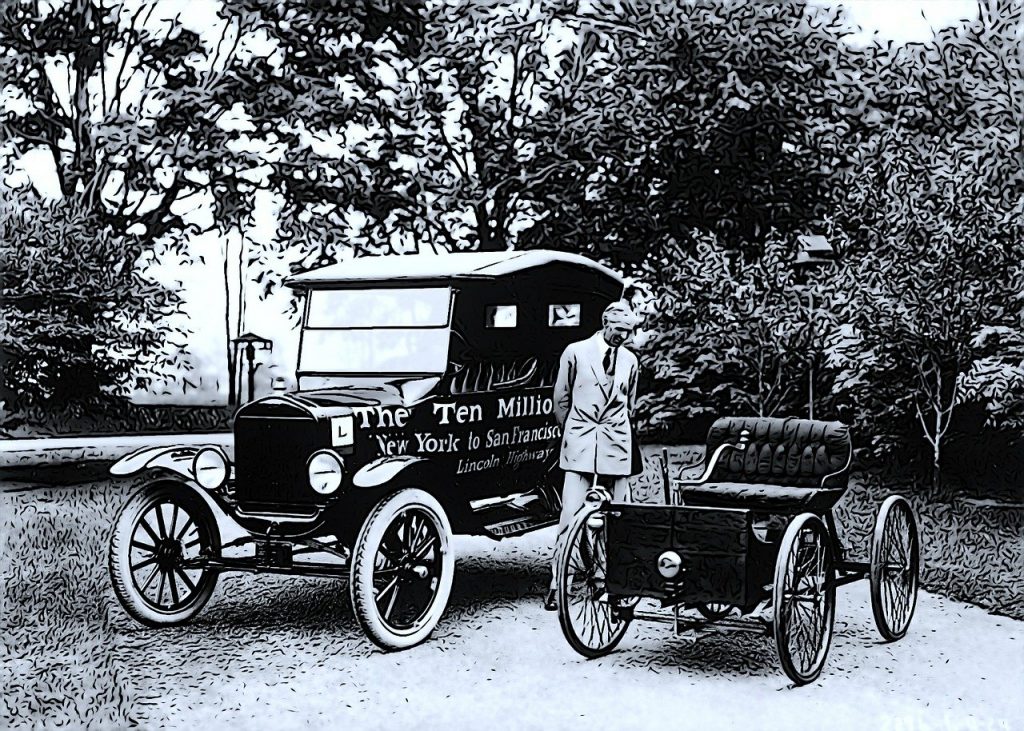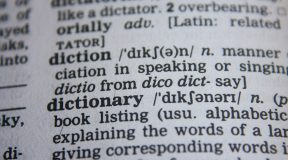Continued from Part 1: Here “How the Audience and Niche Marketing Intersect (Part 1 of 2)”
Many a marketer runs into the concept of niche marketing and doesn’t understand why it’s essential to niche out your concept over tightly focused, highly detailed, and segmented sub-niched sites and pages (content). Technically, Google sees your site as a whole and broken into sub-niches (each page is ranked stand-alone and separately against the rest of the site, then against the world’s content).
Keep It Simple Stupid (K.I.S.S.)

Targeting ONE Niche is about Clarity
(reader and marketer/writer)
Google likes to serve people answers concisely, so the tighter your sites focus the more powerful the answer (less noise for a busy researcher!). In this sense, you need to write a book but focus every page stand-alone and as a part of the bigger concept.
Someone may need one paragraph from your article, a paragraph from another (you may have linked to in your paragraph!), and overall the researcher wants pieces to create a whole understanding devoid of opinion- just the facts ma’am.
So How Do You Do It?

You MUST ONLY target ONE niche/sub-niche for each part of your overall niche in your marketing. You focus tightly on the audience’s specific needs this way. It makes it more personal and specific. Feedback on your comments section may give you ideas directly from your audience of what niche to segment next.
You can always build out every part of the niche (mosaic?) and link them together giving the reader in one sub-niche a choice of other things to read in the same category.
Keeping each niche/sub-niche tight allows you to appeal to a specific segment of an audience and overall they may all be the same audience, but only because you’ve organized your content to hit their interests IN DIFFERENT angles. In different situations when parts of a niche become motivating, but others may not lead them to that need because it’s off-topic (partially on the topic) or doesn’t hit their exact needs. An example is someone may be hungry but a commercial comes up about food they don’t like. They want food but they want specific food at a specific time (mood).
If you show them fried chicken from KFC they may want the mashed potatoes TOO, but if the whole commercial is just for mashed potatoes they may not pay attention (at this time, but in another mood they may search and find your mash potatoes niched article and by association want some chicken).
Niche is about Focus and Breadcrumbs…

Segmentation is about focus, for the reader, but also to help YOU focus your content and marketing tightly in all areas. Like a hotel overall you need the impression to be good, but each room, and in each room the bathroom, each amenity (bath, toilet, sink, towels, soap, hair dryer, mirror etc…) – must be perfect. What if they want a bath, don’t care about the hotel or costs just want a bath but it’s the one thing that’s wrong? It won’t matter the hotel is awesome, the place is a palace- if that one person wants a big bath! One customer may want a great bed, but as you niche out the many amenities, you see how each and the overall whole, need to be optimal.
Niche Creates More
(More focus, more comfort, more detail on one piece of a bigger puzzle)

Niches make it easier for ANYBODY to quickly see if the answers are there, but also makes it powerful in a marketing sense as there are lot’s of ways to take advantage of all the extra pages you create and hone into a specific niche.
Niche-ing is about building faster trust with impeccable detail within a boundary that helps them focus one thing at a time, then they can focus on the next piece or be done!
People have many things going at once and often need just one segment of a niche/sub-niche and would be more likely to stop and check it out.

Think about wanting a toaster. Before amazon, you’d have to look all over the place for a store online that sold them, then pan through their site to find the section with toasters and eventually find one, then you duplicate the pattern to find more- tedious!
How about you Google not only a toaster but a specific brand, black, with a timer.
BAM, you’re served specific, focused, niched (even if part of a larger site) pages of that toaster, and they suggest OTHER toaster brands and compare them but not in the way of the focused page you’re currently looking for.
That’s how you niche, then flow them to more specific search and easy pickings. That person may run across an electric knife while searching for the toaster and will open a new tab to go down that road. People don’t go online to read a whole book to find a piece of information they need, they may not even want to read an entire 400 word article, just the subtitled section on what they need specifically.
They want the piece they need, not the whole story. It’s what makes the internet so powerful- it’s niched out for efficient fact-finding!
Henry Ford and the Assembly Line

To circle back to the original point, an audience is a group of people interested (or likely interested) in something specific you have to offer (including information). You have to hone the 7.8 Billion potential readers down to a very simple, specific, detailed, and contained within a parameter micro-niche that will limit the complexity of the topic.
It’s about starting and keeping it simple for the reader and the writer too. To gain the attention of modern readers you need to make it incredibly simple to focus. Niche-ing out your information compartmentalizes it into digestible bites. Those pieces can be super focused.

When Henry Ford built cars efficiently and effectively, pouring out 500 cars in the time other manufacturers took months or even years to produce that many, he did it by creating positions for every nut and bolt on the vehicle.
There was a guy who only made bolts. He made bolts all day until he mastered making bolts and they had the most proficiently built and designed bolts available. Another guy had another part and using this simplified model, with hundreds of people all doing this, including others who assembled a small section of parts others made, each person got incredibly proficient at what they did day in and day out.
Ford knocked out ALOT of cars A DAY because this system was so efficient and was built on mastery individually synergizing for an overall bigger goal, but each person was only aware of their part- it brought incredible focus. You could say it was a federation of parts, skills, and management that synergized to make cars fast AND HIGH QUALITY- attention to detail.
In much the same way, niche-ing your Niche (focused from the overall available information to a niche) into sub-niches (car is overall goal, pieces are synergized into systems (putting parts together) then into synergies of parts made meticulously each) is the same as your marketing campaign (management).
The overall product niche is the car, the systems for linking all the parts together into a car is the web and search engines, and the individual parts are the content sub-niched to a micro-niche (your powerful content).
Parting Out to Get More Reach

Parting Out Your Full Niche Brings Many People To PARTS of your content, but in bulk you gain more people reading and using it, so it doesn’t matter if they read it all, or visit all of your pages.

Your main niche is only the first focus. Breaking it down into possible categories within the niche is imperative. Breaking THOSE down into micro-niches (where applicable) is like tuning everything up through the nuances.
People want information but they need to first filter out everything in their head, so they need answers in pieces, this wedges the concept into their immediate focus undistracted by details that don’t matter at that time. Each sub-niche is a different article covering one angle in detail. Then there are articles that link several pieces of information together like a virtual next chapter or table of contents to their content or linking together several other authors’ pieces to create a resource.
Focus. Keep it Simple Stupid (K.I.S.S.)

These are the points. Keep it focused, tightly to the simple potent idea. Break it into a link list (internal linking of your pages to each other) spread throughout all the pieces.
If they want a specific answer to a question, they will see that piece when searching (if you did your SEO right), then if they want more information or to expand, your external links embedded in the articles will walk them through more research- all of this also makes more pages, thus more ad space.
Why not Just Show as Many People as Possible?

For one, marketing budget. You can target people pretty easily with facebook or google ad systems, search engine marketing is based on efficiency in getting the right content to the right eyeballs. If you pay to show 1 Million (random) people your ad, you likely, in a blind push out to a random audience only hit a serendipitous few who “may” care.
Running Ads on FB/Google Require Being Focused on a Niche Audience to be Effective

All the ads you run to people who don’t want, don’t want to see your ad, and that ignore or complain about it (and your brand), as forecasted by the advertising giants (FB and Google) algorithm of engagement, can get your ad accounts banned!
Why?
Because by segmenting your entire marketing concept to a specific audience, you will have some cold and never warm traffic, but if you do it right, as you hone your campaign you’ll see mostly 3rd friend (from the example above) type of audience members.
These are warm leads essentially. So when they see your ad they may want to see it but they likely won’t NOT want to see it (won’t have a bad experience having to scroll past it every day). If you do your homework you will hone down to just your warm and hot audience when you retarget them for other information, products, services to become exposed to.
Capture Their CURRENT Focus…

If you don’t capture their limited (it’s a busy world!) attention by being super specific FIRST, then lead them down the rabbit hole (more pages also honed to a specific segment of the niche) you may lose them. People are non-linear in nature when researching.
They have a problem AT THAT TIME that they need an answer to but otherwise will need another piece of information. By targeting everyone, you’re targeting nobody- and people don’t like to feel cold and distant (corporate feeling business that sells anything they want like a door to door salesman of general goods but not sure about any one of his products.
Organization

You’re using a pattern to build an audience through sub-niches like a book broken into chapters, and subchapters, they may want to know that neuroscience part of the book only, to answer a question, but eventually, they will want to look at the other chapters and sub-chapters (links in the content like a table of contents spread throughout several articles instead of in one place through interlinking your content across different niche sites, for example).
But even if they only see one page of the entire book- the proper building of your content and niche audience will yield success even if they never see any other pages. Each page is, by this definition, stand-alone, but synergizes with the others TOO.
This is how Google seems to think now. One page of an entire website is ranked, then the site as a whole is ranked, and all of this based on the ranks of all the other NICHE pages/sites out there. Google likes clean and simple, focused content. Content that can be one molecule of a whole element of other pages (yours and other people’s).
In a sense, it becomes interchangeable not only with your expansion of the niche across sub-niche sites (or microniche sites) but also with the overall lot of other content. In this way, people can piece together information from multiple sources, angles, and content that helps them in a more personalized way. Simple bricks (your tightly niched content/site) to a Leggo Castle (their answers but bricks in the castle analogy are different articles focused on their personal needs (angle)).
Good Luck!






1 Comment
How the Audience and Niche Marketing Intersect (Part 1 of 2)
(August 21, 2020 - 12:53 am)[…] Why Segmenting Your Niche into Sub-Niches is Useful, Powerful, and Organic (2 of 2) […]